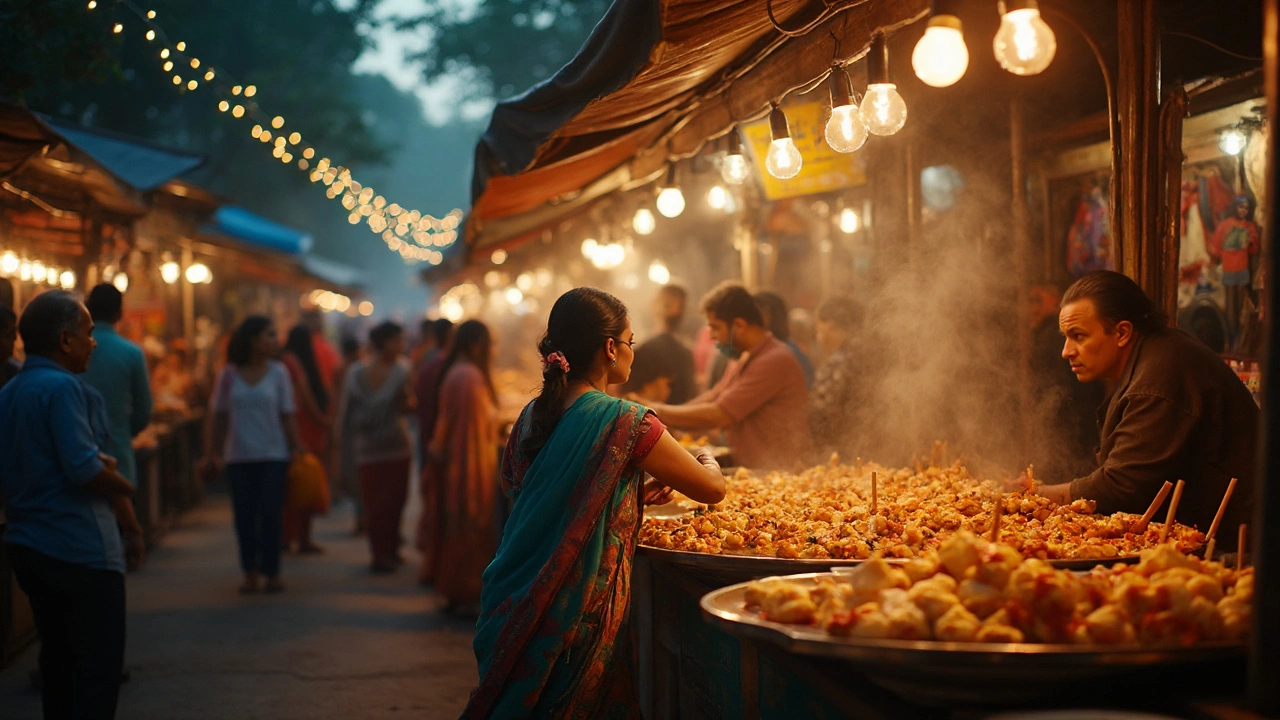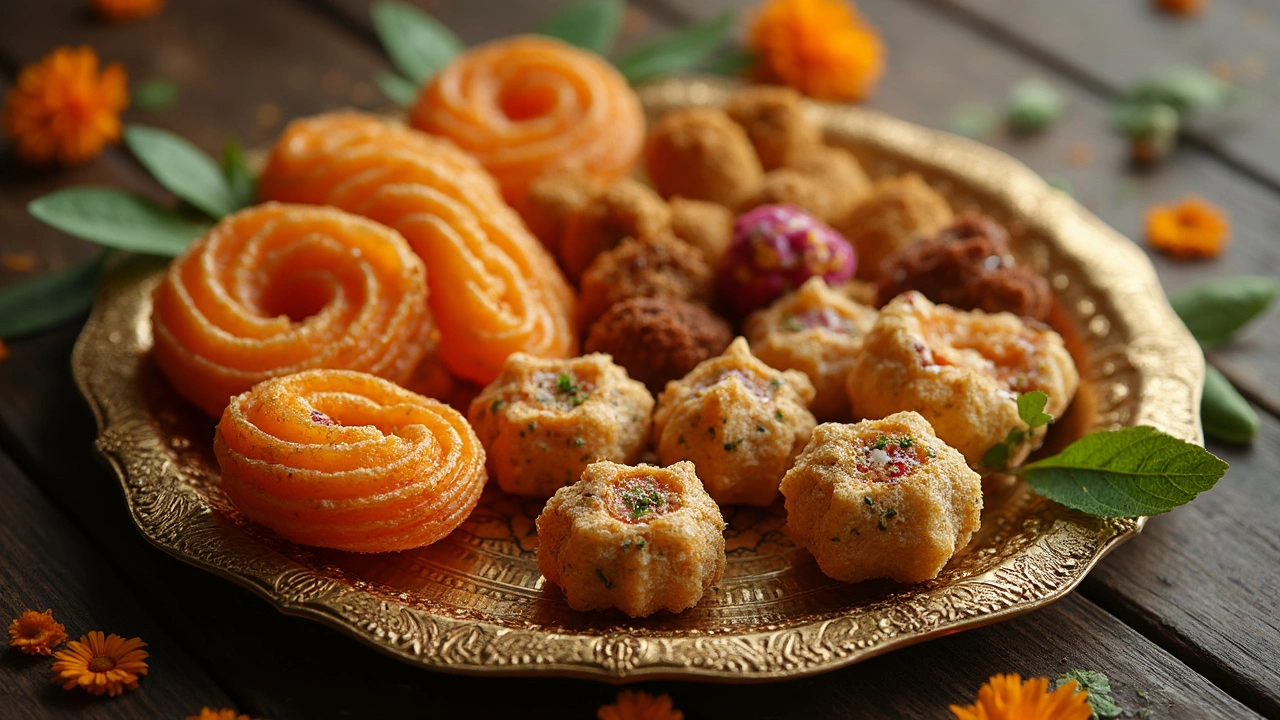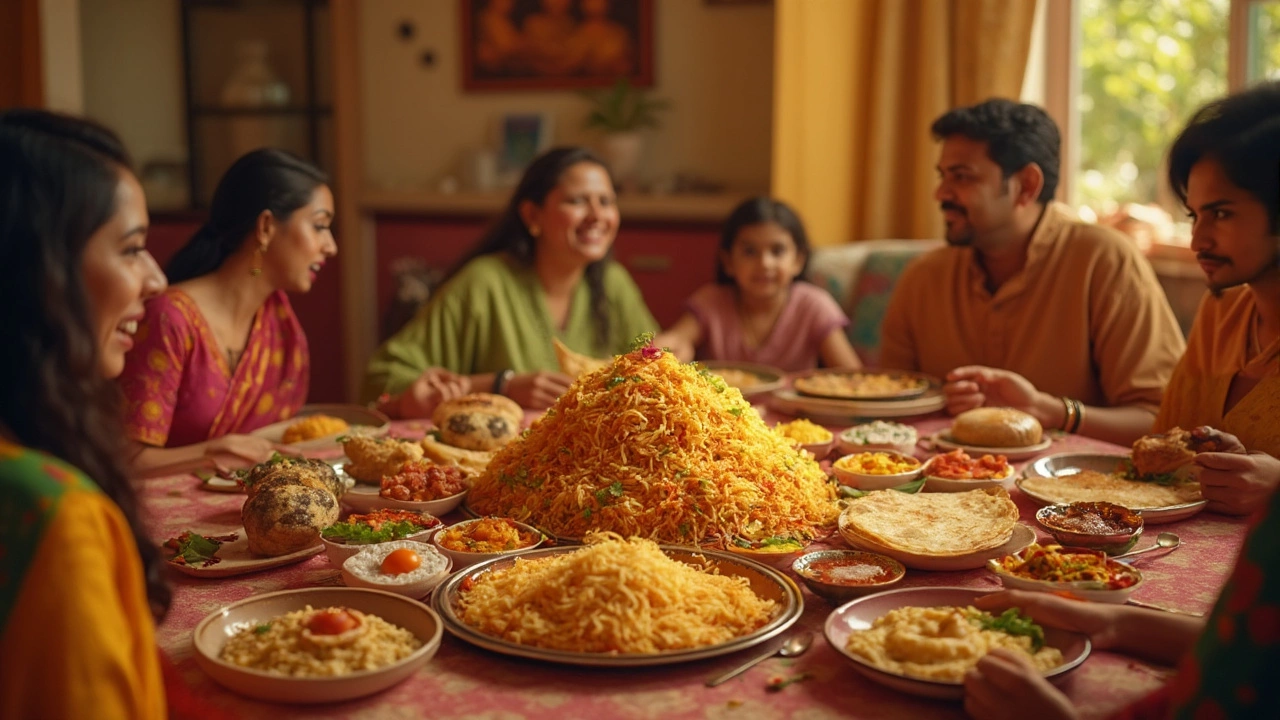Step into the whirlwind that is Indian food, and you’ll realize nothing about this cuisine is quiet or subtle. Spices hit your nose before you taste a thing, streets sizzle with pans frying samosas, and someone’s grandmother will swear her butter chicken is pure magic. When people talk about the delicacy of India, there’s more hiding behind those fragrant curries and festive desserts than just flavor—there’s centuries of history, culture wars over recipes, and a whole lot of love poured in every mouthful.
What Makes “Delicacy” Special in Indian Food?
The word “delicacy” in India doesn’t just mean expensive or fancy. It hugs together dishes that are rare, seasonal, or wrapped in local nostalgia—like the first mangoes of summer, or a dish cooked only on festival days. A delicacy could be labor-intensive like Kashmiri Rogan Josh, or simple but ceremonial like Payasam from Kerala.
What surprises most visitors is how vast the idea of a delicacy is. What’s common in one region is coveted elsewhere. Take Hyderabadi Biryani: in Hyderabad, it’s street food; in other cities, it’s party food, and you’ll find heated debates about whose recipe does it justice. Even at weddings, being served Rajasthani Dal Baati Choorma or the King of South—Dosa—means you’ve hit jackpot on the culinary front.
The diversity doesn’t stop at taste. Each dish brings stories. Some are about royal kitchens—like Awadhi Kebabs, born in Lucknow when a toothless king asked for soft meat. Others are about scarcity, like Sarson Da Saag and Makki Di Roti from Punjab, which grew out of winter fields and frugal times. If you look at sweets (and yes, India has a dangerous sweet tooth), you’ll find Rasgulla from Kolkata battling for pride with Petha from Agra or Mysore Pak from Karnataka. Delicacy here means a celebration of ingredients, nostalgia, and culture, all fed in one plate.
Regional Wonders: North, South, East, West
Dive into the map and you’ll find each corner of India clings to its own food identity. Northern India is the homeland of creamy curries, tandoori, and breads like naan and paratha. There’s something about a Punjabi feast that makes you want to loosen your belt and reach for another scoop of dal makhani. In Delhi, people name places by their food—like Chandni Chowk’s jalebis or the legendary Karim’s kebabs.
Head south, and things get tangy, spicy, and coconut-rich. Dosa, idli, sambar, and thick mango pickle sit next to fish curries and coconut rice. Tamil Nadu’s Chettinad dishes, for example, are a firework of black pepper and tiny lamb cubes—a true test of your tolerance for spice and flavor. Kerala, ‘the land of spices,’ indulges you with appam and stew, garnished with snippets of history—traders, explorers, and invaders all left their marks here.
Western India introduces us to Gujarati thalis, a platter covering everything from sweet dal to spicy shaak (vegetables) and soft dhokla. Maharashtra brings street food heaven: pav bhaji, vada pav, puran poli, and poha. Mumbai’s food is a melting pot—one minute you’re eating Iranian bun-maska, next, you’re holding Goan fish curry.
Eastern India is a queen when it comes to sweets—rosogolla, sandesh, mishti doi. But it’s not just desserts. Bengali fish curry, Assamese bamboo shoot pork, and Naga smoked meats show just how inventive people get with whatever’s at hand, thanks to rivers, wetlands, and jungles all around.

From Royal Kitchens to Streets: How Dishes Become Delicacies
India’s kitchens have been the playground of cooks from all walks—royal chefs, street vendors, homemakers. Some delicacies, like Dum Pukht biryani, come from the lavish parties of monarchs who demanded flavors so intense you’d remember the meal for weeks. Then there’s food born from the hustle of city life—Chaat in Lucknow, Pani Puri everywhere from Delhi to Kolkata, or Mirchi Bada in Jodhpur’s crowded bazaars.
Street foods often start as something humble—leftovers or off-cuts turned into gold by sharp entrepreneurial minds. Pani Puri, for example, began as a way to stretch potatoes and spiced chickpeas. Samosas morphed from simple fried triangles to a thousand variants across India filled with anything from spicy lamb to chocolate for Diwali.
Royal dishes might be labor-intensive, but street delicacies have their own rituals—watching the vendor tap the puris open, season with just the right amount of tamarind water, or perform circus tricks with the tawa while tossing Delhi’s famous Kathi Rolls. The point? Delicacies aren’t just about ingredients, they’re an experience, a performance, a memory brought back with every bite.
And when you’re talking food in India, no one forgets the grand sweet shops crowded with laddus, jalebis hot from the oil, or trays of barfi sparkling with edible silver foil. Sweets are more than food—they’re good luck at weddings, comfort in tough times, or a sly bribe to win someone’s heart.
Hidden Treasures and Seasonal Gems
There’s another side to the delicacy story—those foods you’ll never find in a regular restaurant, or only at a particular time of year. Think of Nihari, a slow-cooked meat stew eaten at dawn in Old Delhi winters, or the first guavas arriving at markets in Varanasi. You’ll find Makar Sankranti’s til-gud laddus in January or Holi’s gujiya—two sweets you’d struggle to find outside festival months.
In the northeast, some family recipes are so fiercely guarded, they’re only made for annual feasts. The same goes for tribal food from central India, like fiery chicken curries cooked in bamboo, or Mahua flower liquor that never sees a shop shelf. These’re delicacies because they’re rare, woven into local stories and seasonal rhythms.
Then there are foraged foods in hilly areas—wild greens, mushrooms, fresh honey, or tiny river fish cooked over wood fires. Even the mangoes have their special moment—the alphonso from Ratnagiri, only available for a couple of months each year, inspires black market trade and family squabbles alike.
So, if you want to taste India’s delicacies, look beyond restaurant menus. Often, the truly special bites come hidden in people’s homes, village fairs, or those hours when the city is just waking up or winding down.

Tips for Savoring Indian Delicacies
If you’re serious about exploring the delicacies of India, bring three things: curiosity, patience, and a healthy appetite. Don’t be shy about getting recommendations from locals—they’ll know a hidden samosa stand or someone who makes biryani like no other. Street food is safe if you go where crowds gather (a tip: empty stalls are a bad sign), and always watch how quickly the food turns over.
Spices intimidate some, but try dishes as they’re made before asking for ‘mild’. The mix of heat, tang, and sweetness is what makes Indian cuisine pop. Trust the process, even if you’re sweating at first. On the other hand, if you’re allergic or have dietary needs, let the host or chef know—most places can adapt or point you to dishes that are naturally free from problematic ingredients.
It’s worth trying food in different seasons. For example, in North India, winter is perfect for smoky sarson da saag or stuffed parathas loaded with ghee. Summer means chilled aam panna (raw mango drink) and quick, light meals. During festivals, ask what special treats are being made locally—these can range from sweet rice puddings to fried goodies that only appear once in a blue moon.
When it comes to sweets, share portions. It’s an easy way to sample more types without giving yourself a sugar coma. And don’t forget about the drinks: masala chai is a staple, but in the south, filtered coffee is king. In many places, meals end with fennel seeds or paan (betel leaf with seasonings) to freshen your mouth—a ritual in itself.
If you want to try your hand at making something, start simple—like kheer (rice pudding) or aloo paratha. Recipes passed down families can feel daunting, but plenty of home cooks and bloggers now share step-by-step guides online. And nothing beats the feeling when your kitchen starts to smell like cardamom, cinnamon, and fried onions.
Here’s a data snapshot of some popular Indian delicacies by region (with typical main ingredient):
| Region | Delicacy | Main Ingredients |
|---|---|---|
| North | Rogan Josh | Lamb, Kashmiri spices |
| West | Pav Bhaji | Mixed vegetables, bread |
| East | Rasgulla | Cottage cheese, sugar syrup |
| South | Masala Dosa | Rice, potatoes, lentils |
| Central | Poha | Flattened rice, spices |
The delicacy of India isn’t just what’s on the plate. It’s how fiercely people cherish their culinary secrets, how much joy a shared meal brings, and how every bite is a memory of places, people, and traditions. If your mouth isn’t watering yet, good luck resisting the call of the next Indian delicacy you see.
